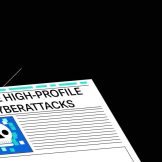The App Security Imperative: Closing the Cyber Gap
Application security is imperative in all phases of your agency’s software lifecycle, from design to deployment. That means you must continue to find new and better ways to embed security testing to reduce the risk of cyberattacks and protect your organization’s data. Recently, a rash of high-profile cyberattacks has exploited weaknesses in the elements usedRead… Read more »










